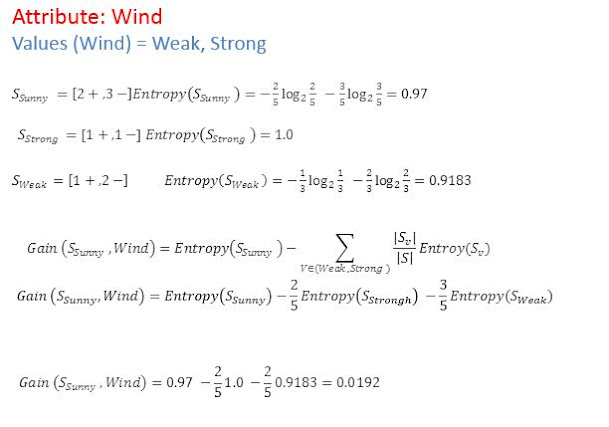Decision Tree Algorithm
o Supervised machine
learning algorithms.
o It is used for both a
classification problem as well as for regression problem.
o It predicts the value of a target variable(dependent
variable)
o
A
decision tree represents a procedure for classifying categorical data based on their attributes.
o
The
construction of decision tree does not require any domain knowledge or parameter setting, and
therefore appropriate for exploratory
knowledge discovery.
o
Decision
tree uses the tree representation to solve the problem in which the leaf node
corresponds to a class label and attributes are represented on the internal
node of the tree Decision Tree learning is one of the most widely used and
practical methods for inductive inference over supervised data.
o
Their
representation of acquired knowledge in tree form is intuitive and easy to assimilate by humans.
Decision Tree Classification Example 1
Ø In above diagram leaf node corresponds to a class label are appendicitis, flu, strep, cold and none and attributes are represented on the internal node of the tree i.e pain in abdomen ,throat ,chest ,cough fever etc.
Example 2 Ø Suppose we have a sample of 15 patient data set and we have to predict which drug to suggest to the patient A or B.
Ø In above diagram leaf node
corresponds to a class label i.e Drug A or Drug B and attributes are
represented on the internal node of the tree i.e Age, Sex, BP, Cholesterol etc.
Decision Tree -
Assumptions that we make while using the Decision tree-
•
In
the beginning, we consider the whole training set as the root.
•
Feature
values are preferred to be categorical, if the values continue then they are
converted to discrete before building the model.
•
Based
on attribute values records are distributed recursively.
•
We
use a statistical method for ordering attributes as a root node or the internal
node.
Mathematics
behind Decision tree algorithm:
• Step1: Entropy controls how a Decision
Tree decides to split the data. It affects how a Decision
Tree draws its boundaries.
•
“Entropy
values range from 0 to 1”, Less the value of entropy more it is trusting.
•
Purpose of Entropy:
• Entropy: Entropy is the
measures impurity, disorder, or uncertainty in a bunch
of examples
• Entropy controls how a Decision Tree
decides to split the data. It affects how a Decision
Tree draws its boundaries.
Mathematics behind Decision tree algorithm -
•
Step2:Calculate the
Information Gain
• For each node of the tree, the
information value measures how much information a feature gives us about the
class. The split with the highest information gain will be taken as the first
split and the process will continue until all children nodes are pure, or until
the information gain is 0.
• Information gain we are going to
compute the average of all the entropy-based on the specific split.
•
Sv
= Total sample after the split
Decision
Tree Algorithm – ID3
• Decide
which attribute (splitting‐point) to test at
node N by determining the “best” way to separate or partition the tuples in D into individual classes
• The
splitting criteria is determined so that, ideally, the resulting partitions at
each branch are as “pure” as possible.
– A
partition is pure if all of the tuples in it belong to the same class
Figure 6.3 Basic algorithm for inducing a decision tree from training examples
What is Entropy ?
· · The entropy is a measure of the uncertainty associated with a random variable
· As uncertainty and or randomness increases for a result set so does the entropy
· Values range from 0 – 1 to represent the entropy of information
Information Gain
•
Information
gain is used as an attribute selection
measure
•
Pick
the attribute that has the highest Information
Gain
D: A given data partition
A: Attribute
v: Suppose we were partition the
tuples in D on some attribute A having v distinct
values D is split into v
partition or subsets, {D1, D2, … Dj}, where Dj contains
those tupes in D that have
outcome aj of A.
A decision tree for the concept buys_computer,
indicating whether a customer at All Electronics
is likely to purchase a computer. Each internal (nonleaf) node represents a
test on an attribute. Each leaf node
represents a class (either buys_computer = yes or buy_computers = no.



































Comments
Post a Comment